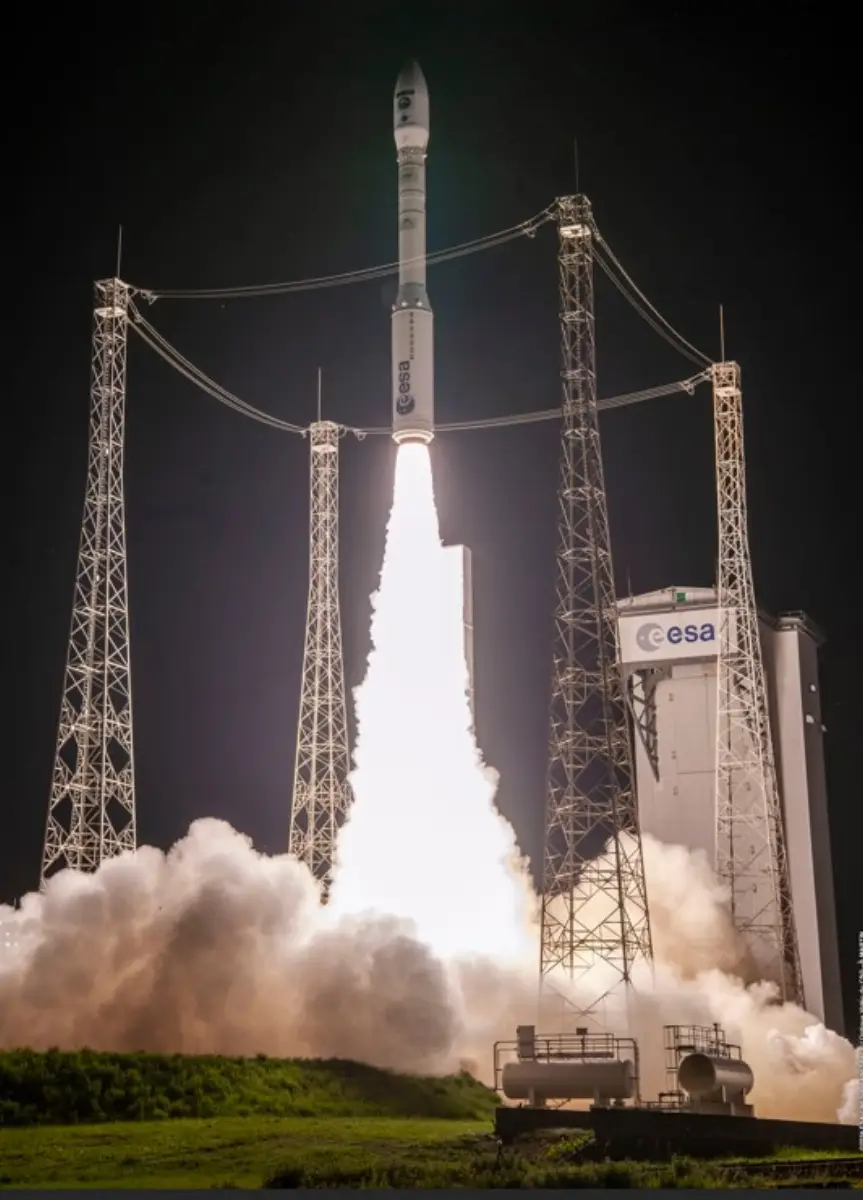
Arianespace launches Sentinel-2C satellite, VV24 mission
Europe's Copernicus Earth observation program

This flight was the last Vega launch, marking the transition to the Vega C launcher, which is scheduled to return to flight by the end of 2024
On Wednesday September 4th 2024, the last Vega launcher (VV24 mission) lifted-off from the Guiana Space Center, French Guiana, at 10:50 pm local time (September 5th, at 1:50 am UTC, 3:50 am CEST). Vega successfully placed its passenger, the Copernicus Sentinel-2C satellite, into Sun-synchronous orbit (SSO) at an altitude of 775 km. Spacecraft separation occurred 57 minutes and 27 seconds after lift-off.
After lift-off from Europe’s Spaceport, the Vega launcher was propelled by the first three stages for a little over six minutes. Then the AVUM 4th stage ignited twice before releasing Sentinel-2C in the target orbit marking the successful launch. A third AVUM ignition deorbited the AVUM stage on a safety reentry trajectory.
A few minutes after separation, ESA acquired signals from the satellite, marking the successful mission for our partners and customers.
This launch is the 5th Sentinel satellite in the Copernicus program to be launched by Arianespace after 4 successful launches, including two on Vega: Sentinel-2A in 2015 (VV05) and Sentinel-2B in 2017 (VV09). The European Commission has awarded to Arianespace and to Vega C five other Copernicus satellites: Sentinel-1C, Sentinel-1D, Sentinel-3C, CO2M-A and CO2M-B.
Sentinel-2C, which was designed and built by a consortium of around 60 companies led by Airbus Defence and Space, is the 144th satellite built by Airbus Defence and Space launched by Arianespace. It is part of the European Commission’s Copernicus Earth observation program, the world’s most advanced Earth observation system. Copernicus provides continuous, independent, and reliable Earth observation data and services to public authorities, companies and citizens around the globe. The program is co-funded by the European Union and ESA.
The Copernicus Sentinel-2C satellite, with its wide swath, high-resolution, and multi-spectral imaging capabilities, will support a broad range of operational applications including agriculture, water quality monitoring, natural disaster management (e.g., wildfires, volcanoes, floods), and methane emissions detection. For agriculture, the mission helps to monitor crop health, predict yields and enable precision farming. Images are used to detect crop type, and to determine biophysical variables such as leaf area index, leaf chlorophyll content and leaf water content to monitor plant growth and health.
The Vega rocket, designed to send into different orbits mainly light Earth observation and scientific payloads, was launched for the first time from Europe’s Spaceport in French Guiana in February 2012. In all, counting this final VV24 mission, Vega carried out a total of 22 launches throughout its 12 years in service. This mission thus marks the handover to the Vega C launcher, the new generation of Vega launchers, scheduled to return to flight by the end of 2024, with Copernicus Sentinel-1C on board.
The Vega program is the result of the cooperation of 10 European countries. It has been developed under the leadership of ESA, with Italy (ASI) as the first contributor, Avio Spa (Colleferro, Italy) as a prime contractor delivering a ready to lift-off launcher to Arianespace, which will remain its operator up to the VV29 mission.
The VV24 launch at a glance:
349th launch for the Arianespace launcher family (312th launch from the Guiana Space Center)
10% of the satellites launched by Arianespace are Earth observation satellites
5th Sentinel satellite launched by Arianespace
50th mission for the European Space Agency
144th spacecraft built by Airbus Defence and Space launched by Arianespace
22nd and final Vega launch.
AVIONEWS - World Aeronautical Press Agency